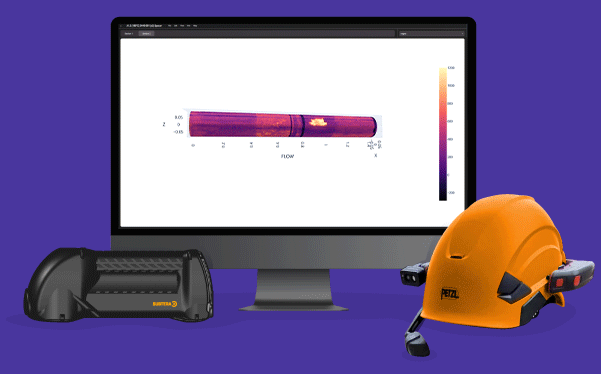What can terahertz sensingtell us about CUI?
If asset integrity is your daily responsibility, you already understand the critical role non-intrusive inspection (NII) methods play in maintaining safety and productivity. When you are tasked with overseeing miles of topside pipework and an array of storage vessels, even the slightest wall loss—just millimetres—can signal the need for costly and disruptive interventions. This means you must carefully select screening techniques that strike a balance between cost, practicality, and effectiveness for your facility.
Risk-based inspection (RBI) methods employ a variety of technologies to detect corrosion under insulation (CUI) and the liquid moisture that typically precedes it. The latest capability in the screening toolkit is terahertz (THz) detection. But how does it work, and when is it the right choice for your asset integrity strategy?
In this blog, we’ll explore the science behind THz detection, its advantages over conventional methods, and the key scenarios where it can significantly enhance your RBI program.
What is THz detection technology – and what can it tell us about CUI?
In very simple terms, when corrosion occurs, iron-oxide commonly forms on the surface of carbon steel pipework. When this corrosion is heated to the temperature of the process fluid, it radiates photons of THz light, at an intensity determined by:
- temperature
- composition
- thickness of the corrosion
This principle also holds for moisture, however water trapped within insulation also absorbs any THz light radiated from behind the wet insulation.
The THz light that is measured by Subtera’s cameras, measures variation in radiated THZ, thereby identifying where there are notable variations beneath the cladding – commonly, where corrosion and moisture is located.
The photons of THz light radiated from the corrosion, transmit through the insulation and polymeric cladding, at which point they are measured using Subtera’s Pi360.
What are the benefits of using THz detection to locate CUI?
As with other NII technologies, passive THz imaging has a range of benefits and some limitations.
| Benefits | Limitations |
| Detects corrosion and water, even when the latter isn’t in contact with cladding. | THz light cannot pass through metal (i.e.: steel cladding, foil vapour barrier, carbon-based materials). |
| Operates while polymeric cladding and insulation remain in-situ. | Requires a temperature differential between asset and ambient. |
| Plant remains operational during scan thereby helping to maintain production. | |
| Suitable for hot and sub-ambient assets |
Asset integrity managers know that relying on a single inspection method is a risk they can’t afford to take. When the consequences of incomplete inspections range from costly to catastrophic, a comprehensive approach using complementary technologies is essential.
Subtera’s multi-spectral sensing approach fuses data from a range of sensors. This provides a more thorough, efficient, and cost-effective solution for detecting hidden CUI and moisture, empowering asset integrity managers to make confident, proactive decisions that protect both assets and operations.
Using Pi360 at your facility
The introduction of Subtera’s screening solutions at your asset integrity operations, efficiently provides early-stage clarity around the condition of insulation and the presence of concealed CUI or liquid moisture during a single scan.
As a result, asset integrity becomes more efficient, allowing field engineers to detect and record any cladding damage, measure noteworthy temperature variations across each asset, assess the condition of insulation, and locate underlying liquid moisture and corrosion.
By detecting corrosion and moisture early, operators can make proactive decisions, ensuring the long-term safety, reliability, and efficiency of their assets.
With Subtera’s cutting-edge THz detection, and AI-enabled workflows, asset integrity teams are equipped with the tools they need to reduce downtime, lower costs, and meet critical safety and availability targets. Don’t wait for issues to surface, take control of your asset management with Pi360 and future-proof your operations.
Share article:
You may also like to read
Signup to our newsletter
To hear the latest from Subtera about our technology, industry insights, case studies and company news, enter your email and we’ll send updates directly to your inbox.
By signing up, you agree to our privacy policy.
